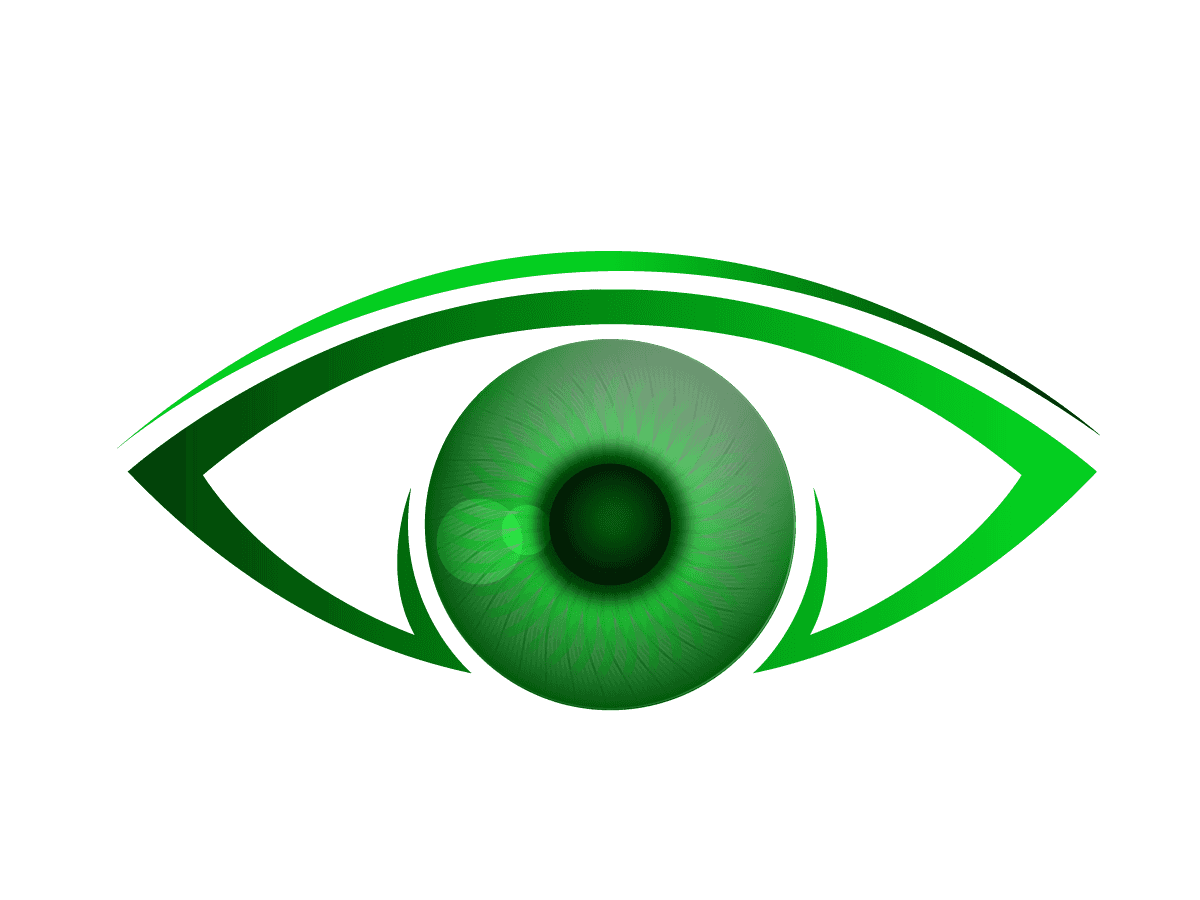Table of Contents
ZEISS has been a world leader in ophthalmic technology for over a century. The company recently digitized its product line, making it a stronger competitor in the industry.
Traditionally, people have hailed Zeiss Ophthalmic as a game-changer. Practices and clinics that adopt it can anticipate a significant enhancement in the quality of service they provide.
ZEISS’s innovative integrated approach to service provision solidifies its status as the industry leader. Clients can now use high-quality equipment.
This equipment comes with data management solutions. This allows for faster processing. Faster processing leads to better patient care in the future.
Undoubtedly, there are valid concerns about the return on investment in ZEISS equipment. Some older models of this brand can be expensive and limited in functionality, which may cause potential buyers to hesitate.
This blog explores and challenges assumptions about Zeiss’s Ophthalmic dominance in optometry. It examines the equipment’s cost-benefit ratio compared to other providers and how it boosts efficiency and patient experience. Lastly, it explores various equipment options and how ophthalmic clinics can integrate them into their workflows.
Examining the Cost-Benefit Ratio of Zeiss Ophthalmic Equipment
Zeiss equipment requires a significant upfront investment – a notable downside of using the brand. A barrier for smaller practices or those facing strict budget constraints.
That said, ZEISS products also offer a compelling return. Practices using them report higher margins because of the equipment’s integrative nature.
This section explores the numerical cost of ZEISS equipment and how much you intend to spend.
High Initial Investment
The costs of ZEISS equipment vary significantly, as explained in this section. Most products fall within the industry standard pricing range, while some are above it and others below.
Zeiss Cirrus 6000
The Zeiss Cirrus 6000’s base price is $38,000 – $40,000. This compares favorably to other leading brands (including Topcon and Heidelberg Engineering), which occupy the $35,000 to $45,000 range. You can sometimes get discounts on older devices, but you may need to time your purchase right. This could be inconvenient if newer products are no longer available.
Additional costs associated with Zeiss OCT operation include:
- Installation: $1,000 to $3,000
- Training: $1,000 to $2,000 (unless staff already have relevant experience)
- Warranty: Costs vary
Without financing, the Zeiss Cirrus 6000 costs $40,000 to $45,000, including training and installation.
ZEISS VisuMax 800
The Zeiss VisuMax 800 is another product with a high initial investment. The laser surgery device costs around $400,000. Similar products, such as the Femto LDV Z8 and the Technolas iLasik FSx 315, range from $300,000 to $400,000.
ZEISS Stratus OCT III 3000
The as-new price of the ZEISS Stratus OCT III 3000 varies from $7,000 to $8,000. The Topcon 3D OCT-1 Maestro costs between $40,000 and $50,000. The Heidelberg Spectralis OCT ranges from $50,000 to $75,000. The price may vary depending on where you purchase it.
ZEISS OPMI Visu 200
The ZEISS OPMI Visu 200 is new and costs between $19,000 and $21,000. This is like other products, such as the Leica PROvido, Topcon OMS-800, and Haag-Streit Hi-R NEO 900. These products typically cost between $50,000 and $100,000.
Return on Investment (ROI)
Many practices use a combination of Zeiss equipment, offering positive returns.
For example, the Zeiss Cirrus 6000 allowed Thomas P. Arnold, OD, FSLS,, to achieve impressive returns in his clinic. He chose a 3-year lease-to-own plan, paying $1,065 monthly for the equipment. He also saved 35% on the instrument by using IRS Section 179.
Patients pay $125 cash for the use of the equipment, with insurance reimbursement of $40. The equipment tests for diabetic retinopathy, images scleral lenses, and tests for glaucoma. It performs around 28 monthly tests, bringing in $2,780 in monthly revenue and $33,360 annually. Therefore, the crude return on investment is 161%.
Boosting Operational Efficiency in Optometry Practices
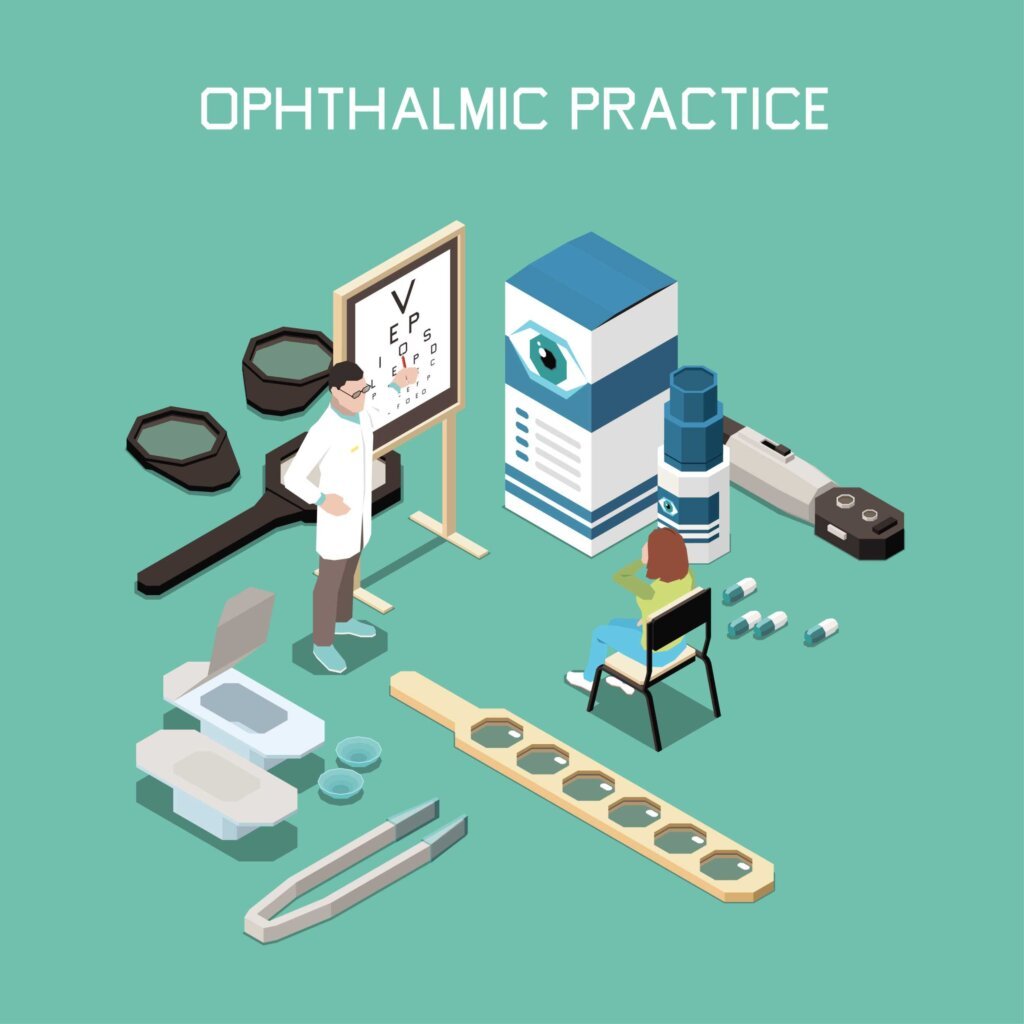
Optometry practice workflows can be sluggish without cutting-edge technology. However, ZEISS now offers integrated digital solutions, allowing tremendous efficiency improvements.
Integration with Digital Solutions
ZEISS provides connectivity solutions in its Essential Line. This line includes slit lamps, digital phoropters, tonometers, and mobile ophthalmic imaging systems. Clients can use these solutions.
The technology allows optometry clinics to easily collect and transfer data using ZEISS’s data connectivity solution.
The technology makes it easy for optometry clinics to collect and transfer data using ZEISS’s data connectivity solution. This prevents mix-ups and ensures compliance with regulations. It enables seamless data transfer between ophthalmic diagnostic tools and electronic medical records (EMR).
The benefits of Zeiss equipment’s compatibility with practice management software are significant. Clinics can look forward to:
- Better data management through structured data. ZEISS enables optometry practices to follow global DICOM standards for future cross-compatibility
- Centralized record-keeping of patients’ images, prescriptions, measurements, medical records, and exam results (i.e., scans)
- Extensive compatibility with EMRs and PACS (Picture Archiving and Communication Systems) for multi-practice compatibility and minimal in-house system reconfiguration
- Reduction or elimination of manual data entry tasks, including:
- Paper printouts of records and findings
- Physical information retrieval (rifling through filing cabinets)
- Instrument calibration
- Instant data transfer between workplace terminals (used by administrators and medical staff) and optometric diagnostic devices to save time
- Greater confidence in diagnosis because of the availability of all patient clinical data via a single system
Because of these innovations, ZEISS’s digital connectivity solutions can improve efficiency. Here are some examples:
- Automating more processes than would be possible through conventional optometry clinic software (that doesn’t connect diagnostic devices)
- Assisting with more rapid patient diagnosis and leveraging data for faster treatment recommendations. ZEISS connectivity suite speeds up patient flow in clinics, increasing efficiency without sacrificing quality of care.
- Reducing errors by preventing or avoiding the use of manual data entry. Optometry clinics can use machines to measure and record patient parameters instead of using handheld devices and paper records.
- Enhanced patient care because of higher checkup cadence. Patients can come to the clinic more often for rapid processing and expert treatment advice.
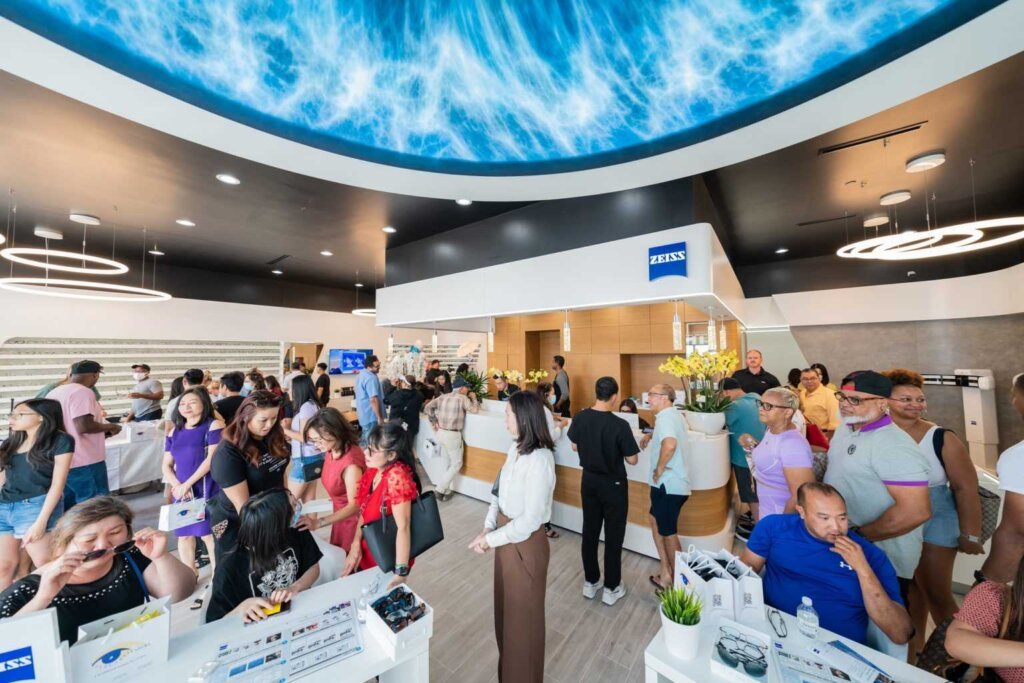
ZEISS Vision Experience Centers are available across the country. These kits offer optometrists and eye doctors a ready-made business idea to highlight their modern facilities and services. These centers offer numerous services that make it more straightforward for clinics to attract patients in a saturated marketplace. Furthermore, they split into four areas that serve a distinct function to ensure a smooth transition through the sales funnel:
- Attraction – gaining the attention of shoppers and patients
- Engagement – giving patients a reason to want to know more about optometry services
- Investigation – diagnostic techniques and resources to better understand the patients’ eye health
- Consultation – areas where patients can get expert consultations from clinical staff
Many examples demonstrate how ZEISS’s Vision Experience campaign and optometry devices greatly enhance patient care and efficiency. For example, Eyecare Leaders in Pearland, Texas, used the program to give patients thorough and quick eye exams. The technology helped the clinic give eye exams faster, making patients happier with quick results.
Eyecare Leaders said that ZEISS’s innovations were central to its business model. The technology prompted shoppers to come to the store for a checkup with professionals. Many medical services are now available online. Joseph and Mary Nguyen, the owners, said the changes they made improved the eyeglass shopping experience for customers.
The changes made by Joseph and Mary Nguyen improved the overall shopping experience. The improvements were particularly noticeable when buying eyeglasses.
Eye Trend is another example of an optometry practice benefiting from ZEISS’s Vision Experience Center approach. A clinic in Melbourne, Australia is using equipment from a Swiss company. The equipment helps track patient information and connects it to ZEISS software for management.
Eye Trend received comprehensive support from ZEISS to implement the system during the fit-out. The brand assisted with staff training and marketing, which are essential for the success of Vision Experience Centers.
Being with ZEISS lets the outfit elevate the customer experience from the moment they enter the clinic. Products helped eye care specialists provide digital services for various situations, such as eye care and dispensing glasses.
Customers found the ZEISS Visufit 1000 digital concentration device impressive as part of ZEISS’s engagement process. The Visuscreen 500 and Visuphor 500 from the company connect to a central database managed by ZEISS. This helps patients get fast results and accurate medical diagnostics.
According to Eye Trend, “the support has always been first rate” regarding ZEISS digital connectivity solutions. The clinic confirms it has gone to a new level since becoming a ZEISS Vision Expert practice.
ZEISS’s Vision Experience campaign is global, with further programs in Dhaka, Bangladesh. The company opened a center at Bangladesh Eye Hospital, a significant milestone in the country’s eye care industry.
Finally, Rivoli Vision is another ZEISS Vision Center offering concept stores in Dubai Hills Mall and Doha Festival City. The practice now partners exclusively with a German-based brand, providing advanced technology to patients in the city. The unique approach helps shoppers find eyewear they love from top brands, including Gucci, Monogram, and Lindberg.
ZEISS Essential Line portfolio of diagnostic instruments

The ZEISS Essential Line portfolio of basic diagnostic instruments simplifies ophthalmic examination workflows while maintaining exceptional quality from the start. The German manufacturer designs equipment for efficiency and precision, enhancing diagnostic accuracy and streamlining routine procedures in optometry practices.
Furthermore, integrating ZEISS Essential Line instruments with centralized software management makes patient care more reliable and consistent. Practices using them become more efficient and effective, and medical professionals enjoy their work more.
We will explain the products in the ZEISS Essential Line. These products improve your eye care services. They offer advanced diagnostics and an easy workflow.
ZEISS Slit Lamps
ZEISS slit lamps are advanced tools used for screening vision. They produce high-quality images of the front part of the eye. These images are superior in quality and allow for more precise medical analyzing. Ophthalmologists use them to diagnose issues faster and more confidently while minimizing patient disruption.
ZEISS slit lamps vary between tower-type and integrated depending on the clinic’s requirements. The SL 220 and SL 800 models have LED lights that save energy. The integrated SL 115, SL 120, and SL 130 models use halogen lights for the stereomicroscope.
Some ZEISS slit lamps have high-definition 18-megapixel cameras and helpful imaging software. The technology enables the capture of more details relevant to clinical evaluation.
Some models are upgradeable, lowering the long-term cost. ZEISS plans the product lifecycle to reduce the risk of complete equipment replacement later.
ZEISS Visuref 150 ($2,999.00)

The ZEISS Visuref 150 autorefractor and keratometer is another piece of equipment that streamlines ophthalmic diagnosis. These units provide accurate measurements for detailed examination of eye conditions.
The Visuref 150 has a helpful user interface that improves the diagnostic process. Key features include automatic fogging to reduce accommodation effects, adaptable illumination, and contact lens base curve measurement for fittings.
Even so, instrument control is straightforward, owing to the touch screen and joystick. Clinicians can use the monitor to view high-resolution diagnostic information and apply settings to adjust viewing angles.
Meanwhile, the motorized chin rest improves patient comfort during scanning. Practices can store ten measurements per eye on the device, enabling rapid review. The printer and network integration features allow rapid printouts in the clinic without administrative overhead.
ZEISS i.Profiler Plus ($6,666.00)

The ZEISS i. Profiler Plus is a modern system that combines four different devices. These devices are an ocular wavefront aberrometer, autorefractometer, ATLAS corneal topographer, and keratometer. Using multiple systems together is helpful for doctors to understand patients’ eye conditions comprehensively.
The Hartmann-Shack wavefront sensor measures 1,500 points in a 7mm pupil aperture. This provides essential diagnostic information in less than 60 seconds.
The i.Profiler has an easy-to-use interface and touch screen. This is helpful for better contact lens fitting. It can also connect to additional ATLAS Review software.
Advanced data management via Visuconsultant 500 improved ordering and achieving, reducing the need for more measurements. Better workflow efficiency supports the practice environment, with seamless data transfer as standard.
ZEISS Visulens ($1,495.00)
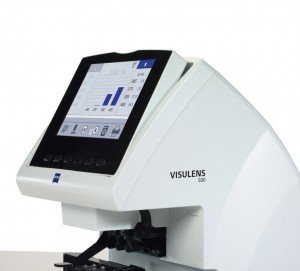
The ZEISS Visulens 500 and 550 improve lens measurement and patient care with advanced technologies. The devices employ Hartmann-Shack sensors with over 81 measurement points for fuller characterization. The UV spectrometer measures UV protection in lenses and has different modes for various glasses, including contact lenses.
The Visulens 550 offers superior, user-friendly operation. Intelligent alignment support enables better positioning for lens measuremen, while built-in marking improves pupillary distance measurement. Connectivity comes in the form of ZEISS FORUM, ZEISS i.Com mobile, or Visuconsult to reduceut human error.
ZEISS Visuscreen and Visuphor ($5,999.00)

The ZEISS Visuscreen 100/500 and Visuphor 500 advanced subjective refraction units improve the accuracy and efficiency of vision testing. Systems embody seamless workflows with default profiles that clinicians can adjust to suit the requirements of specific patient groups. The built-in refraction logic includes fogging buttons (and more) to improve examinations and rotate users faster.
As with most ZEISS equipment, the Visuscreen 100/500 and Visuphor 500 have touchscreen interfaces. These tools make it easier for eye doctors to adjust the visual acuity chart and digital phoropter during exams.
Device connectivity comes from EMR/PACS integration (to reduce errors). Devices eliminate the need for manual data entry and centralize patient data in a central storage system. Technologies improve efficiency and accuracy while cutting administration that can harm practice productivity.
ZEISS Visuplan 500 ($2,500.00)
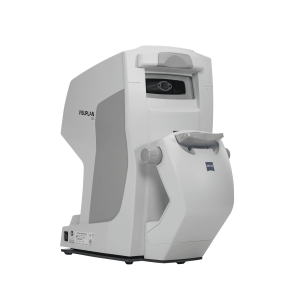
The ZEISS Visuplan 500 tonometer simplifies intraocular pressure measurement for glaucoma screening. The device affords an automated touchscreen-based measurement process for improved patient preparation and experience. The unit has LEDs and adjustable chinrests for stable positioning. It uses a gentle “air puff” instead of a corneal anesthetic for contact-based methods.
ZEISS Visuscout 100 ($3,950.00)
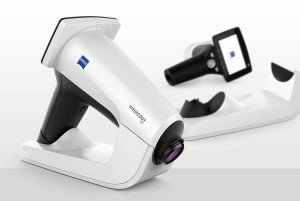
The ZEISS Visuscout 100 handheld fundus camera for mobile retinal imaging improves equipment accessibility across clinical settings. The small and light tool can improve the patient’s experience in clinics, homes, and other places. ZEISS markets the device as suitable for checkups and documenting various retinal conditions, including age-related macular degeneration (AMD), glaucoma, and diabetic retinopathy.
The tool can work without dilating the pupils. It can take color and red-free images of the back of the eye. The tool has a wide field of view.
Conclusion
Zeiss Ophthalmic, a pioneer in optical innovation, offers cutting-edge solutions that transform optometry services, ensuring precision, efficiency, and superior patient outcomes.
Like all specialist ophthalmic equipment vendors, ZEISS has limitations. Advanced eye care solutions are often bulky, embody complexity, and require maintenance. However, the company’s integrative approach is changing the cost-benefit dynamic for many practices. Clinics can connect eye-scanning and diagnostic equipment to databases that follow patient health record rules like HIPAA.
In addition to diagnostic tools, Zeiss offers innovative lens technologies that enhance vision correction. They design personalized lenses to meet the unique visual needs of each patient, providing optimal clarity and comfort.
Zeiss Ophthalmic dedicates itself to ongoing research and development to provide optometry practices with the latest advancements. This dedication to innovation improves patient care and enhances the overall efficiency of optometry services.
Optometry offices can enhance their services using Zeiss Ophthalmic solutions, offering patients advanced eye care technology and expertise. Embrace the future of optometry with Zeiss, and make a significant difference in your practice and patient satisfaction.
Many eye doctors have made money by leasing equipment and paying for it over time, which helps spread out the cost. ROI is in the region of 100% to 200% for the equipment surveyed.
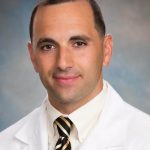
Matthew Strachovsky, M.D.
Dr. Strachovsky's undergraduate training began in Boston, Massachusetts at Boston University and was completed at Stony Brook University in Long Island, NY. There he graduated Summa Cum Laude, obtaining a Bachelor of Science degree in Biology with special recognition for academic achievement.
He continued his education at Stony Brook School of Medicine and graduated with the additional designation of the "MD with Recognition" program. He worked as an intern in Internal Medicine at Winthrop University Hospital in NY and pursued a residency at Stony Brook University Hospital in Ophthalmology acting as Chief Resident in his final year. He completed his fellowship training in Vitreoretinal disease with a major emphasis on the diagnosis and management of retinal vascular diseases under the direction of Dr. Michael O'Brien at Koch Eye Associates in Rhode Island.
Dr. Strachovsky has presented research at the annual Association for Vision and Research in Ophthalmology meeting and published articles in journals including, Investigative Ophthalmology and Visual Science and The Journal of Neuro-ophthalmology.
Dr. Strachovsky's professional interests include the management of Age-Related Macular Degeneration and diabetic eye disease. He is Board Certified in Ophthalmology and a member of the American Academy of Ophthalmology, American Society of Retina Specialists, Young Ophthalmologist Network, and Leading Physicians of the World.
" I believe that the physician/patient relationship is more important than ever. Being an Ophthalmologist allows me to help patients and build a foundation of trust, knowledge, and professionalism when it comes to eye care".
